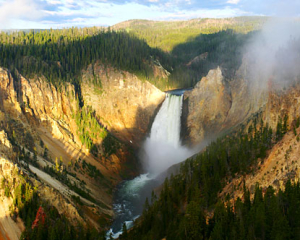
Several years ago biologists studied the reintroduction of wolves into Yellowstone National Park and its impact on plant growth. This may seem like an odd connection to explore since wolves don’t eat plants. However the elk that wolves prey on do.
What researchers found was a significant “fear factor” impact. Wherever visibility was low or escape difficult due to topography or other obstacles, plants like fast growing cottonwoods were significantly taller. This is apparently because elk—now fearing the wolves—browse less at those locations. In wide open spaces with good visibility, there was no significant difference in plant size.
It’s a great illustration of how a single change (wolf reintroduction) had significant indirect effects that have literally changed the look of the whole landscape. Similar effects are occurring as innovation practices become more prevalent in the global marketplace. Some of the most obvious effects include:
Business Ante
The price of just staying in the game and competing successfully increasingly includes an innovation component. Not just in traditional innovation strongholds like consumer products companies and software, but all types of manufacturing, health care, media, and education among others. Sectors once known for relatively little innovation—if not outright resistance—are now recognizing the need to develop that capacity.
Talent Shift
Global competition for innovation talent has shifted the value of a wide range of skills. The shift is away from anything involving repetition and compliance, (Even tasks that once required an attorney or accountant) in favor of the capacity to create and generate insights. Who would have guessed 20 years ago that an anthropology major could land a high paying position in a corporate marketing department, or business consulting firm?
Accelerating Change
Much has been made of the rapid increase in our total knowledge base but knowledge alone just fills up libraries. It’s the application of that knowledge to drive innovation that really impacts us…and demands still more change in response.
Creativity Education
We’re seeing an explosion in the number and variety of post-secondary academic offerings in everything from creativity to design thinking, to entrepreneurship, all aimed at developing our capacity to innovate. (K-12 education has some major catching up to do here, at least in the U.S.)
So here’s the question I’ve been pondering: What are some of the less obvious changes we’re seeing or that we should expect to see as a result of the growing prominence of innovation? How is the landscape changing in ways that are not expected?
One shift that I’ve long noted is the growing importance of mindset. I’m convinced that the way we look at the world often makes us more or less innovative. So, as innovation grows in importance so does the pressure to adopt certain personal attitudes and assumptions that enhance our capacity to innovate.
There are no doubt many other impacts. What do you foresee that isn’t getting much attention? How is the landscape changing for you and for your business? How do you see the business ecosystem shifting due to the emphasis on innovation…and what problems or challenges or opportunities is that creating?
Get the new Special Report, Innovation Essentials: The Four Greatest Ways We Stop Ourselves…In Business and in Life. Download a free copy at: http://www.insightfusion.com/SpecialReport.asp

Leave A Comment